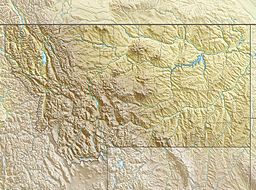Otokomi Lake facts for kids
Quick facts for kids Otokomi Lake |
|
|---|---|
| Location | Glacier National Park, Glacier County, Montana, US |
| Coordinates | 48°43′03″N 113°35′53″W / 48.71750°N 113.59806°W |
| Type | Natural |
| Primary outflows | Rose Creek |
| Basin countries | United States |
| Max. length | .30 miles (0.48 km) |
| Max. width | .15 miles (0.24 km) |
| Surface elevation | 6,482 ft (1,976 m) |
Otokomi Lake is a beautiful natural lake found in Glacier National Park. This amazing park is located in the state of Montana in the U.S.. The lake sits in a special bowl-shaped valley called a cirque. This cirque is just north of Goat Mountain.
To reach Otokomi Lake, you can take a hike that is about 5.2 miles (8.4 km) long. The trail starts from a place called the Rising Sun Auto Camp. It's a great adventure for those who love nature and exploring.
Contents
Exploring Otokomi Lake
Otokomi Lake is a hidden gem within Glacier National Park. It offers a peaceful escape for visitors. The lake is surrounded by tall mountains and green forests. This makes it a perfect spot for enjoying the outdoors.
What is a Cirque?
A cirque (pronounced "sirk") is a natural bowl-shaped hollow. It is often found high up in mountains. These bowls are usually formed by glaciers. Imagine a giant scoop digging into the side of a mountain. That's how a cirque looks! Otokomi Lake sits right inside one of these cool natural formations.
Hiking to the Lake
The hike to Otokomi Lake is a popular activity for park visitors. It's a moderate trail, meaning it's not too easy but also not super hard. Along the way, hikers can see amazing views. They might even spot some local wildlife. Remember to always be prepared when hiking in a national park.
Location and Geography
Otokomi Lake is located in Glacier County, Montana. This county is known for its stunning natural beauty. The lake is part of the larger ecosystem of Glacier National Park. This park is famous for its glaciers, lakes, and diverse wildlife.
Rose Creek Outflow
The water from Otokomi Lake flows out into a stream called Rose Creek. This creek then carries the water further into the park's river system. This is how water moves through the natural environment. It helps to support plants and animals downstream.



